An Innovative Support Structure for Gob-Side Entry Retention in Steep Coal Seam Mining
Abstract
:1. Introduction
2. Geological and Mining Conditions at Awuzisu Coal Mine in Xinjiang, China
3. Shear Strength of Roadside Filling Body of Gob-Side Entry Retention Structure in Steep Coal Seam
3.1. Mechanical Model of Gob-Side Entry Retention Work in Steep Coal Seam
3.1.1. Supporting Force of Coal Wall
3.1.2. Supporting Force from Rubble inside Gob
3.1.3. Supporting Force from Filling Body
3.1.4. Shear Stress on Roadside Filling Body
3.2. Shear Strength of Filling Body
3.2.1. Supporting Force from Coal Wall
3.2.2. Supporting Force of Rubble inside Gob
3.2.3. Supporting Force from Filling Body
3.2.4. Thrust from Rubble inside Gob on Filling Body
3.2.5. Shear Strength of Roadside Filling Body
4. Discussion
5. Laboratory Experiment on Shear Performance of Backfill–Truss Support Structure
5.1. Experimental Materials
5.2. Experimental Schemes
5.3. Experimental Results
6. Field Application
6.1. Parameters of Backfill–Truss Support Structure
6.2. Construction Technology
- (1)
- Advance support was undertaken on the working face using two rows of single hydraulic props erected in the intake airflow roadway and return airway of the working face. These props were arranged at row and column separations of 1000 × 1000 mm2, and the advance-support distance was maintained at 25 m (Figure 15). After the supports of the roadway face-end were normally removed, three rows of single hydraulic props were established in the roadway retained in the gob to temporarily support the working face. These props were fixed at 1000 mm intervals in both the rows and columns, and the supporting width was 4000 mm.
- (2)
- After the working face was advanced by 3 m, densely arranged wooden pillars were used as substitutes for the single props in the side closest to the gob, followed by the construction of the filling frameworks. The lateral plate (2.8 m in height) was always perpendicular to the horizontal plane, while the inside plate was perpendicular to the inclined direction of the coal seam. Moreover, the distance between two plates in the floor strata was always 3.5 m (see Figure 15). To maintain the stability of the filling frameworks and roof, hydraulic props were fixed on one side of the lateral plate close to the retained roadway at intervals of 1 m along the advancing direction of the working face. To prevent cement grout from escaping by seepage, a plastic diaphragm was laid on the inner side of the filing plate.
- (3)
- After being uniformly mixed according to the proportions listed in Table 1, the filling materials were transported to the filling area through a pipeline beside the roadway to construct the roadside filling body.
- (4)
- Approximately four to five days after the filling body was first constructed, the roadside filling body was supported according to the designed parameters of the truss.
- (5)
- Steps 1 to 4 were repeated until the entire filling wall was constructed.
6.3. Application Effect
7. Conclusions
Acknowledgments
Author Contributions
Conflicts of Interest
References
- Guo, Z.B.; Wang, J.; Cao, T.P.; Chen, L.; Wang, J. Research on key parameters of gob-side entry retaining automatically formed and pressure release in thin coal seam mining. J. China Univ. Min. Technol. 2016, 45, 879–885. [Google Scholar]
- Tan, Y.L.; Yu, F.H.; Ning, J.G. Design and construction of entry retention wall along a gob side under hard roof stratum. Int. J. Rock Mech. Min. Sci. 2015, 77, 115–121. [Google Scholar]
- Farmer, I.W. Deformation of Access Roadways and Roadside Packs in Coal Mines. Dev. Geotech. Eng. 1981, 32, 207–212. [Google Scholar]
- Abdelhadi, K.; Latifa, O.; Khadija, B. Valorization of mining waste and tailings through paste backfilling solution, Imiter operation, Morocco. Int. J. Min. Sci. Technol. 2016, 26, 511–516. [Google Scholar]
- Li, L.; Dubé, J.S.; Aubertin, M. An Extension of Marston’s Solution for the Stresses in Backfilled Trenches with Inclined Walls. Geotech. Geol. Eng. 2013, 31, 1027–1039. [Google Scholar] [CrossRef]
- Zhang, Z.Z.; Bai, J.B.; Chen, Y. An innovative approach for gob-side entry retention in highly gassy fully-mechanized longwall top-coal caving. Int. J. Rock Mech. Min. Sci. 2015, 80, 1–11. [Google Scholar]
- Tan, Y.L.; Yu, F.H.; Ning, J.G. Adaptability theory of roadside support in gob-side entry retention and its supporting design. J. China Coal Soc. 2016, 42, 376–382. [Google Scholar]
- He, M.C.; Zhu, G.L.; Guo, Z.B. Longwall mining “cutting cantilever beam theory” and 110 mining method in China-The third mining science innovation. J. Rock Mech. Geotech. Eng. 2015, 7, 483–492. [Google Scholar] [CrossRef]
- Wang, X.Q.; Zhang, N.; Kan, J.G.; Zhang, N.C. Cracking mechanism and control strategy of concrete roadside wall with large scale. J. China Univ. Min. Technol. 2017, 46, 237–243. [Google Scholar]
- Kang, H.P.; Niu, D.L.; Zheng, Z. Deformation characteristics of surrounding rock and supporting technology of gob-side entry retention in deep coal mine. Chin. J. Rock Mech. Eng. 2010, 29, 1977–1987. [Google Scholar]
- Zhang, N.; Yuan, L.; Han, C.L. Stability and deformation of surrounding rock in pillarless gob-side entry retention. Saf. Sci. 2012, 50, 593–599. [Google Scholar] [CrossRef]
- Zhou, B.J.; Xu, J.H.; Zhao, M.S. Stability study on naturally filling body in gob-side entry retention. Int. J. Min. Sci. Technol. 2012, 22, 423–427. [Google Scholar] [CrossRef]
- Ning, J.G.; Wang, J.; Liu, X.S. Soft-strong supporting mechanism of gob-side entry retention in deep coal seams threatened by rockburst. Int. J. Min. Sci. Technol. 2014, 24, 805–810. [Google Scholar] [CrossRef]
- Gao, M.Z. Similarity model test of strata movement with steep seam. Chin. J. Rock Mech. Eng. 2004, 23, 441–445. [Google Scholar]
- Yun, D.F.; Liu, Z.; Cheng, W.D.; Fan, Z.D.; Wang, D.F.; Zhang, Y.H. Monitoring strata behavior due to multi-slicing top coal caving longwall mining in steeply dipping extra thick coal seam. Int. J. Min. Sci. Technol. 2017, 27, 179–184. [Google Scholar] [CrossRef]
- Ning, J.G.; Ma, P.F.; Liu, X.S. Supporting mechanism of “yielding-supporting” beside roadway maintained along the gob under hard rocks. J. Min. Saf. Eng. 2013, 30, 369–374. [Google Scholar]
- Alejano, L.R.; Ramı́rez-Oyanguren, P.; Taboada, J. FDM predictive methodology for subsidence due to flat and inclined coal seam mining. Int. J. Rock Mech. Min. Sci. 1999, 36, 475–491. [Google Scholar] [CrossRef]
- Zhang, Y.Q.; Tang, J.X.; Xiao, D.Q. Spontaneous caving and gob-side entry retention of thin seam with large inclined angle. Int. J. Min. Sci. Technol. 2014, 24, 441–445. [Google Scholar] [CrossRef]
- Wang, J.A.; Jiao, J.L. Criteria of support stability in mining of steeply inclined thick coal seam. Int. J. Rock Mech. Min. Sci. 2016, 82, 22–35. [Google Scholar] [CrossRef]
- Zhang, D.S.; Mao, X.B.; Ma, W.D. Testing study on deformation features of surrounding rocks of gob-side entry retention in fully-mechanized coal face with top-coal caving. Chin. J. Rock Mech. Eng. 2002, 23, 331–334. [Google Scholar]
- Chen, Y.; Bai, J.B.; Wang, X.Y. Support technology research and application inside roadway of gob-side entry retention. J. China Coal Soc. 2012, 36, 903–910. [Google Scholar]
- Schumacher, F.P.; Kim, E. Evaluation of directional drilling implication of double layered pipe umbrella system for the coal mine roof support with composite material and beam element methods using FLAC3D. J. Min. Sci. 2014, 50, 335–348. [Google Scholar] [CrossRef]
- Zhang, D.H.; Li, H. Experimental study on compression performance of continuous grading gangue. J. Liaoning Tech. Univ. Nat. Sci. 2011, 30, 337–340. [Google Scholar]
- Tan, Y.L.; Liu, X.S.; Ning, J.G. In situ investigations on failure evolution of overlying strata induced by mining multiple coal seams. Geotech. Test. J. 2017, 40, 244–257. [Google Scholar] [CrossRef]
- Ning, J.G.; Wang, J.; Tan, Y.L.; Zhang, L.S.; Bu, T.T. In situ investigations into mining-induced overburden failures in close multiple-seam longwall mining: A case study. Geomech. Eng. 2017, 12, 657–673. [Google Scholar]
- Li, W.F.; Bai, J.B.; Peng, S.S. Numerical modeling for yield pillar design: A case study. Rock Mech. Rock Eng. 2015, 48, 305–318. [Google Scholar] [CrossRef]
- Li, H.T.; Zhou, H.W.; Jiang, Y.D. An Evaluation Method for the Bursting Characteristics of Coal under the Effect of Loading Rate. Rock Mech. Rock Eng. 2016, 49, 1–11. [Google Scholar]
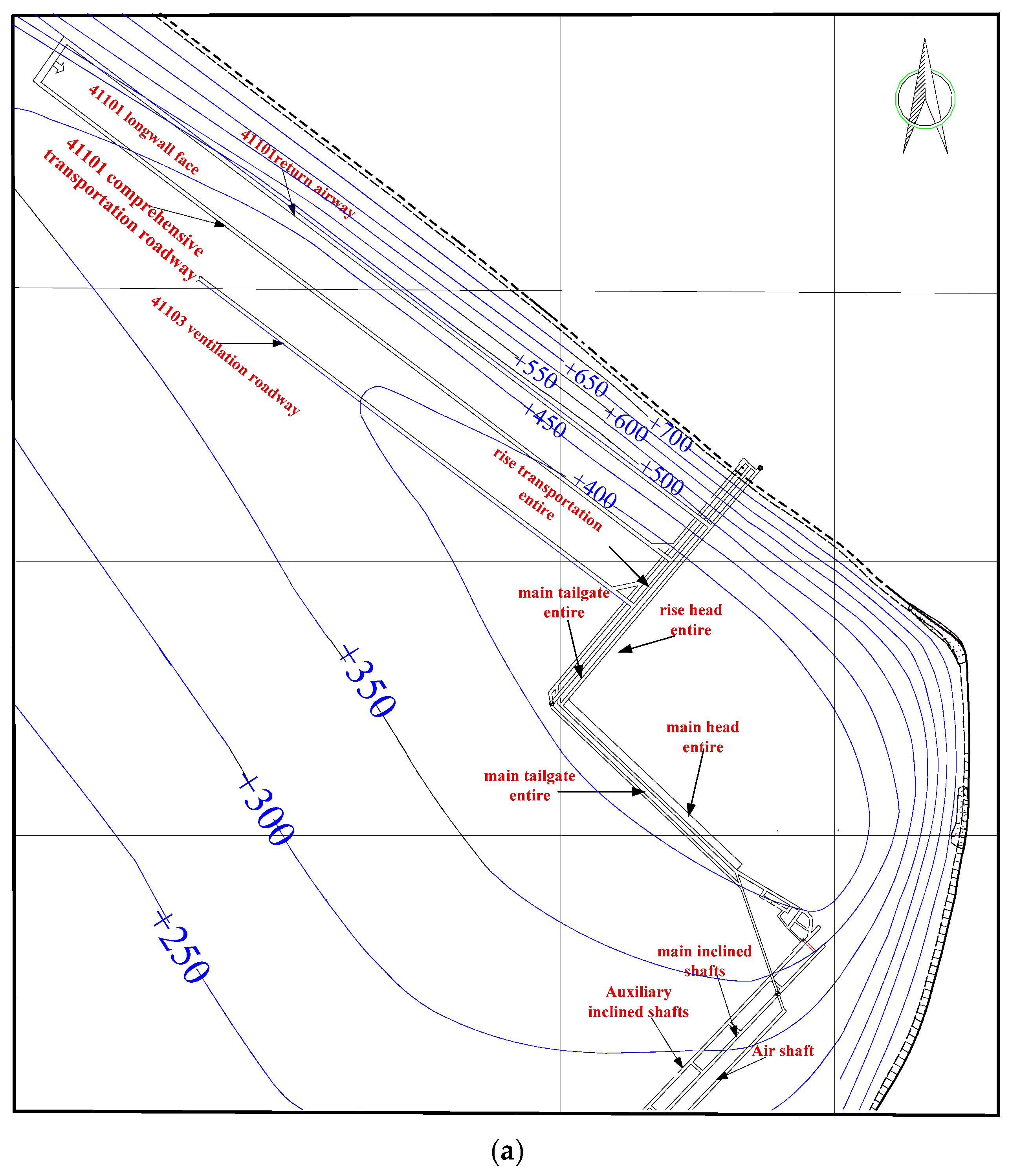

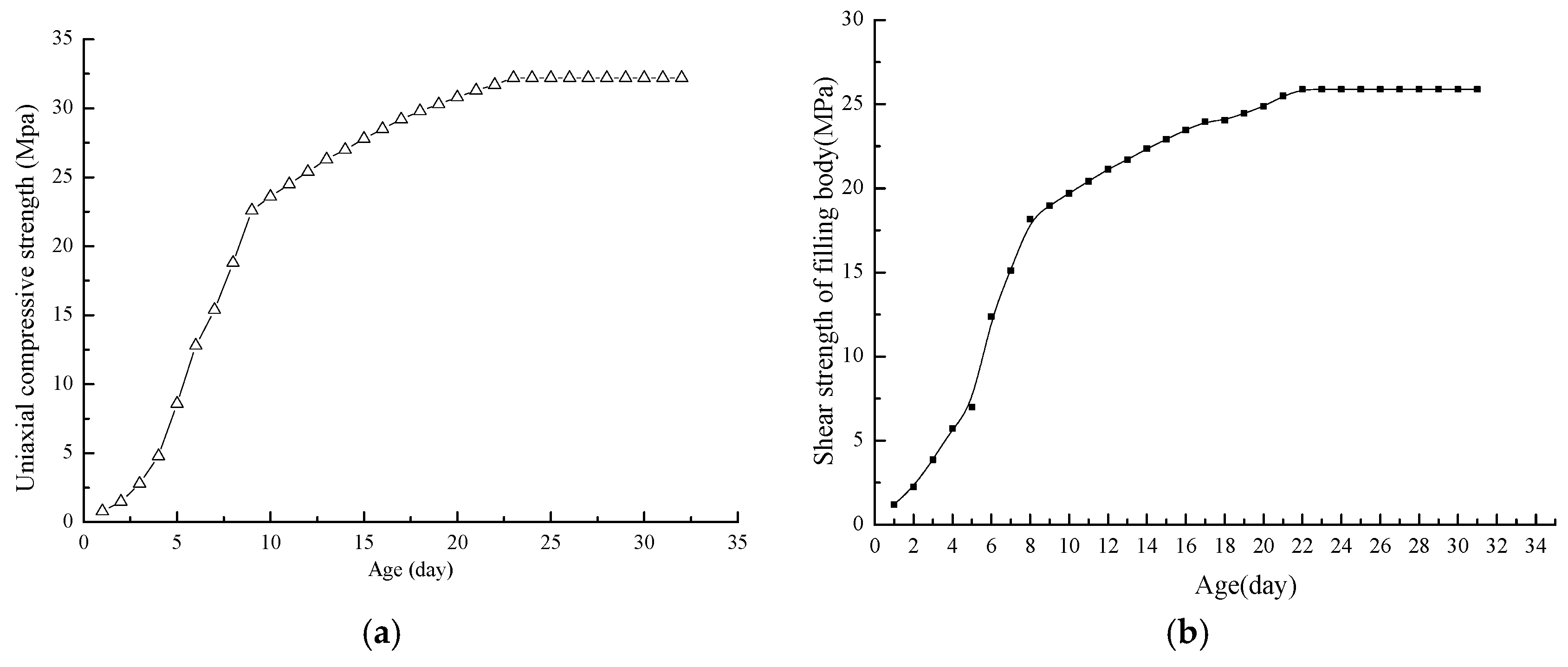
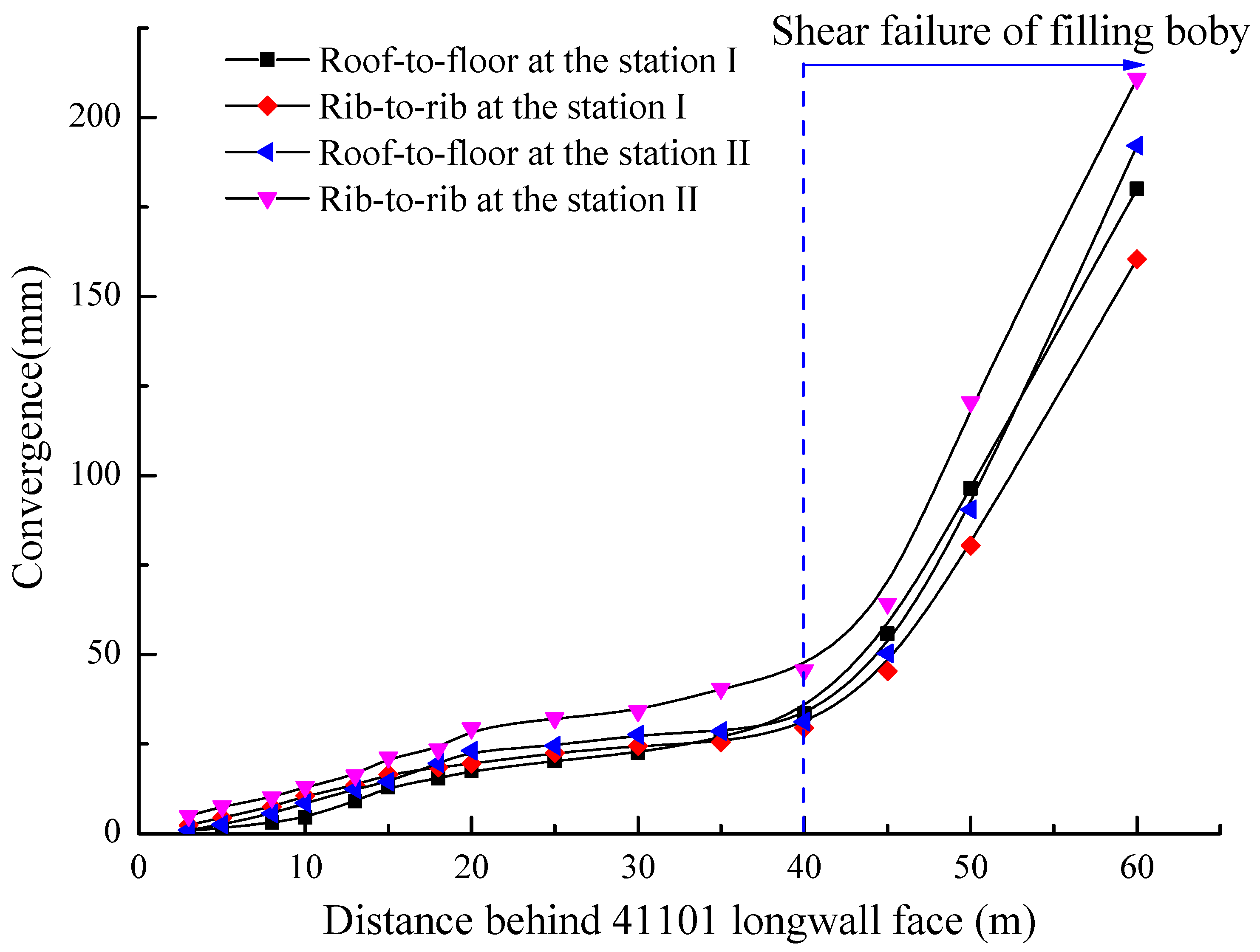
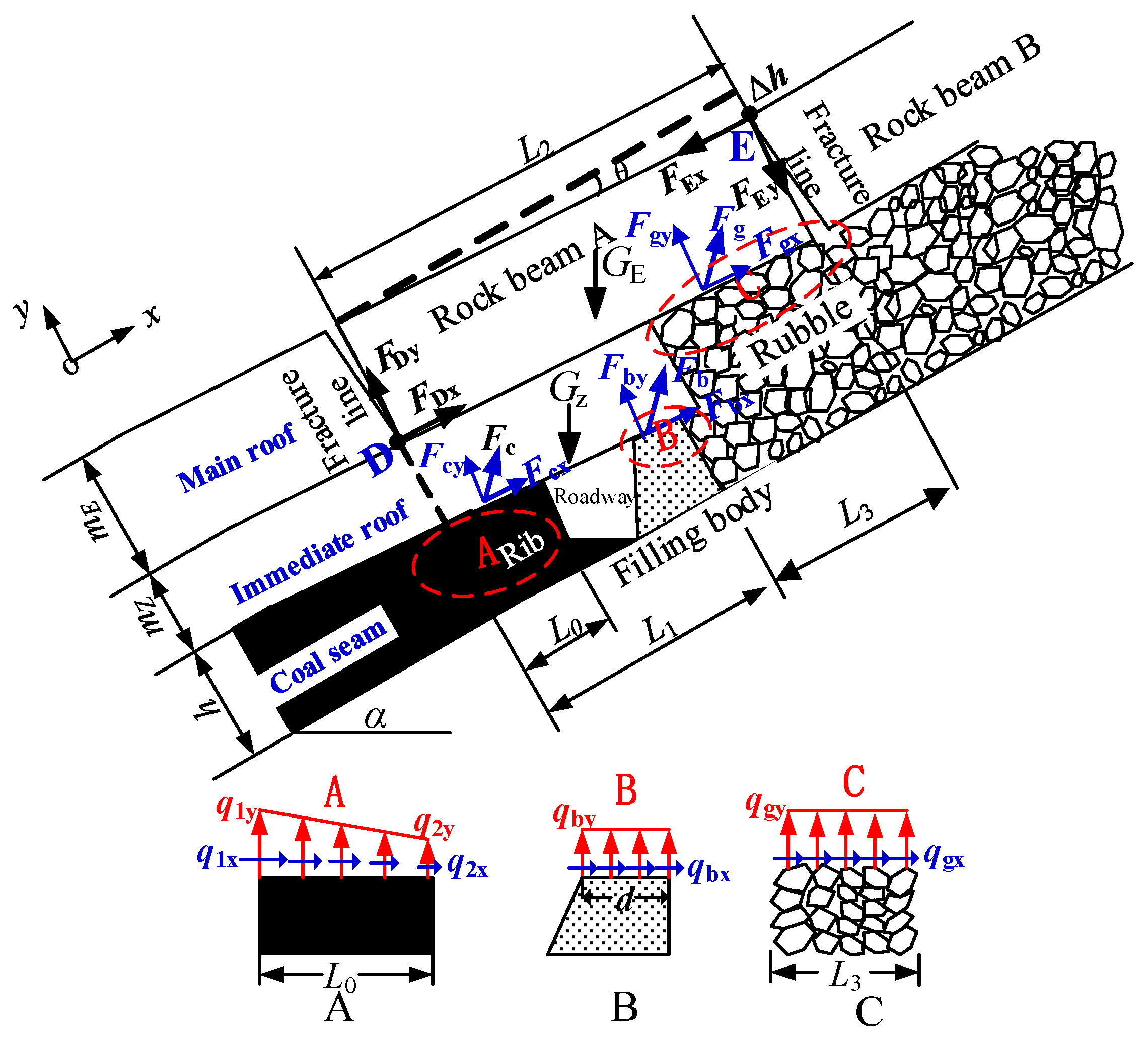



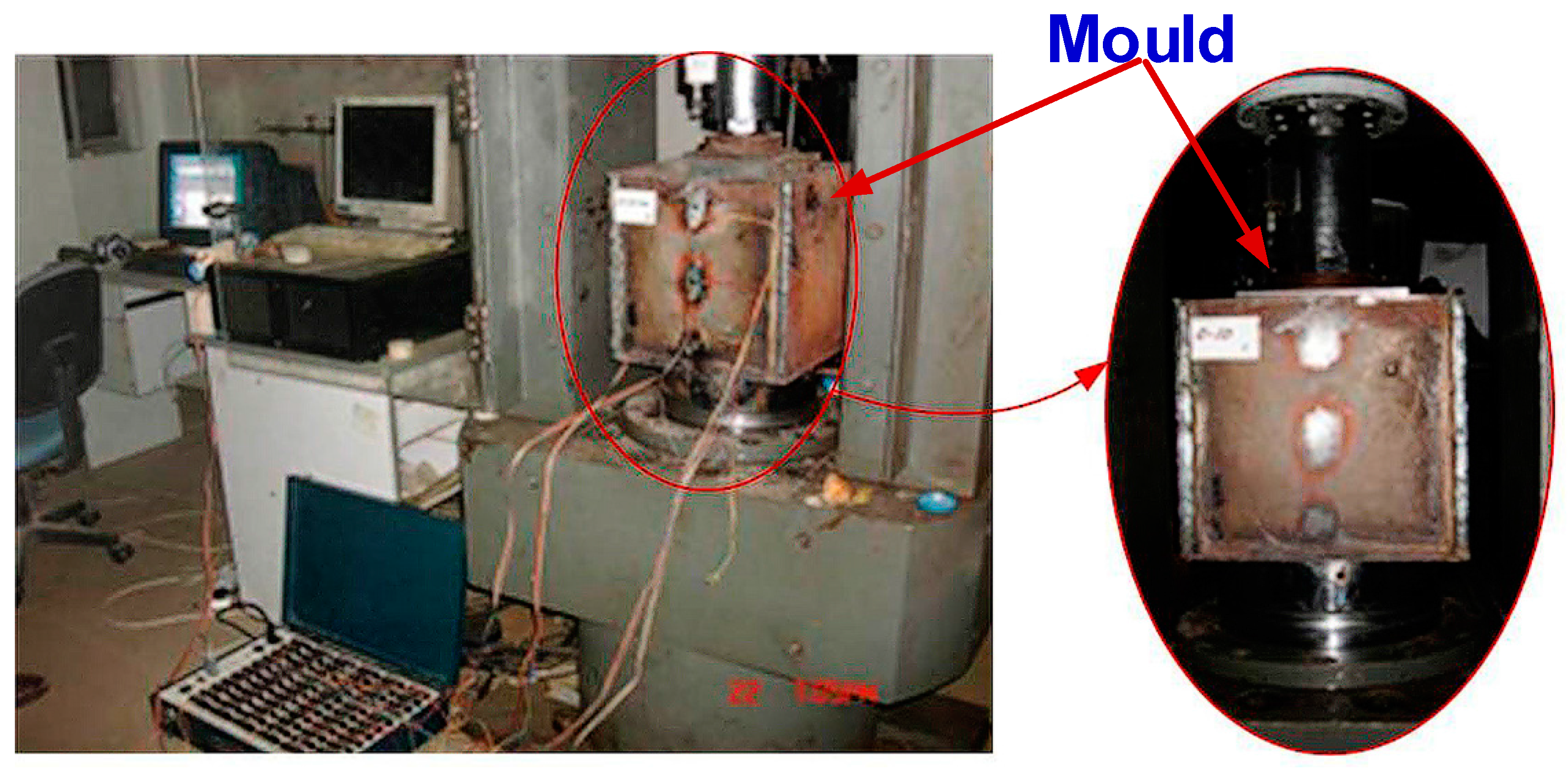

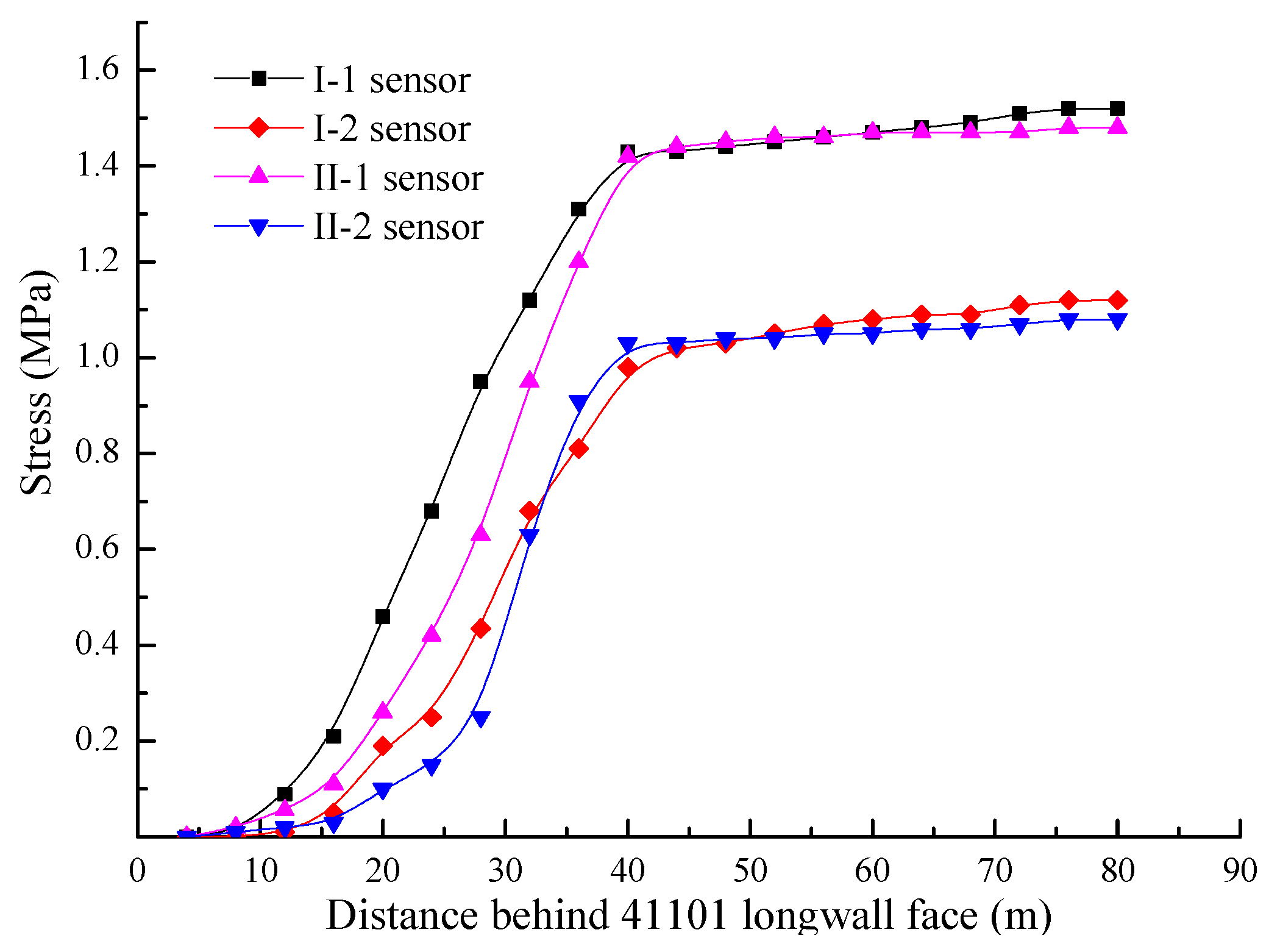
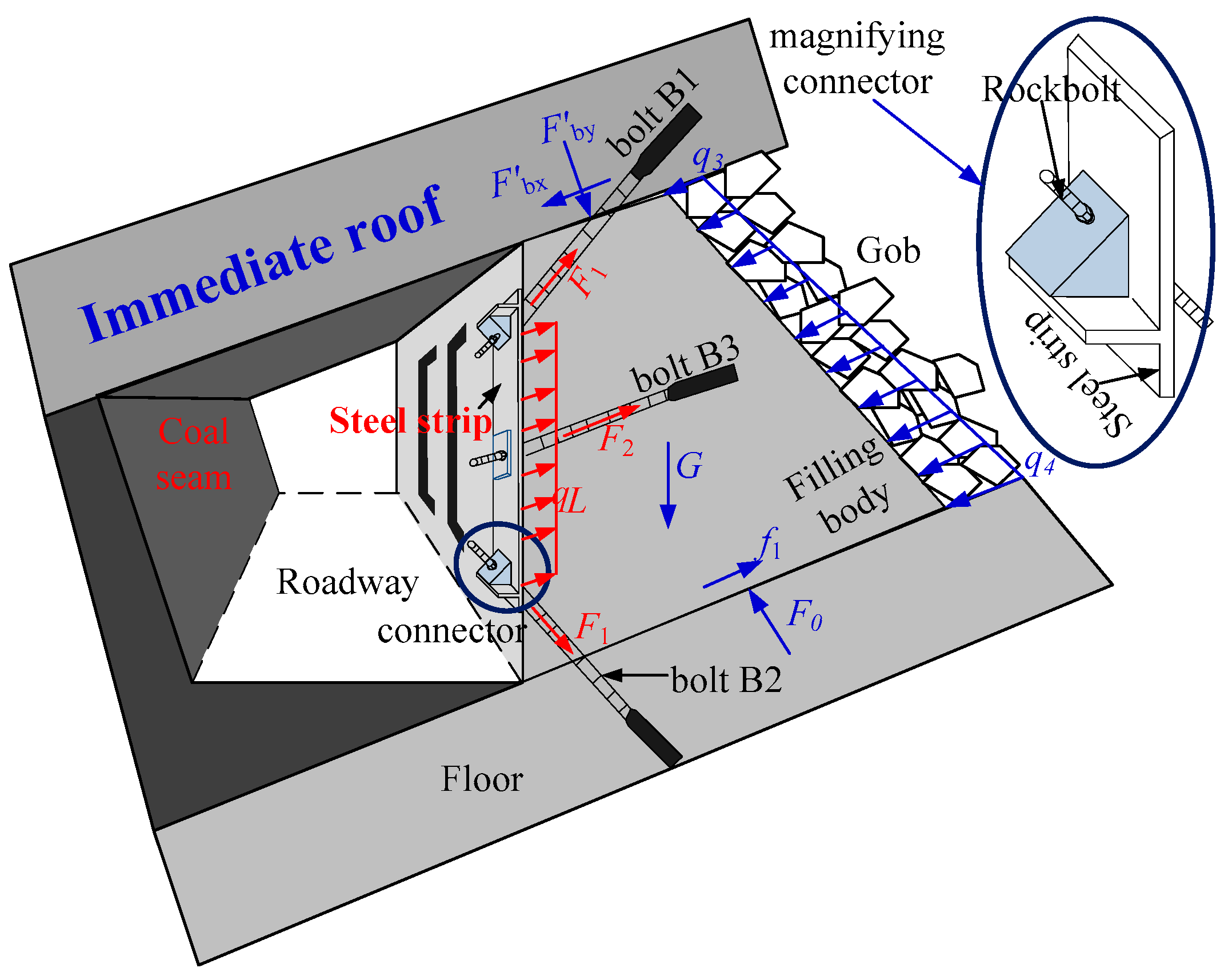
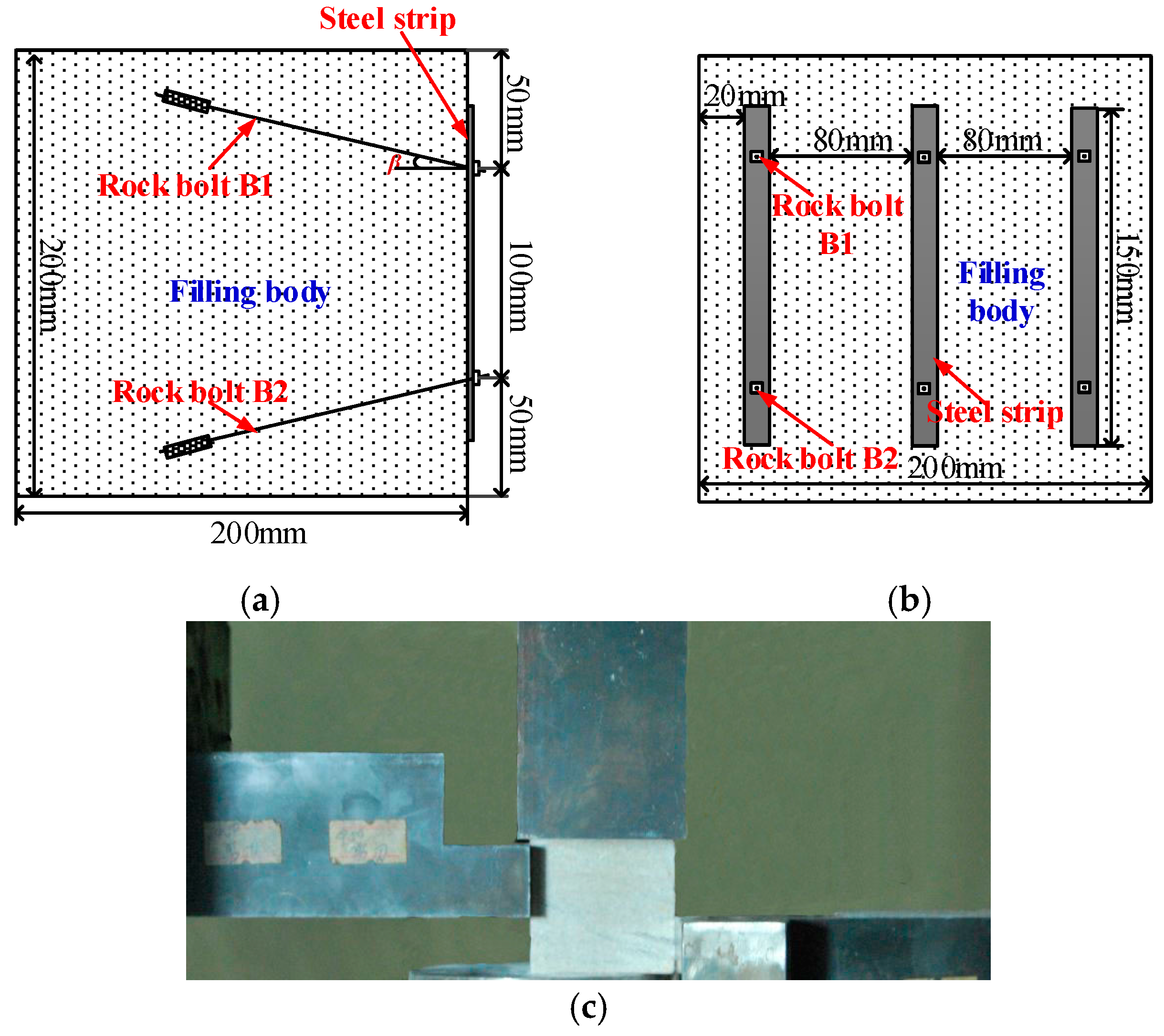
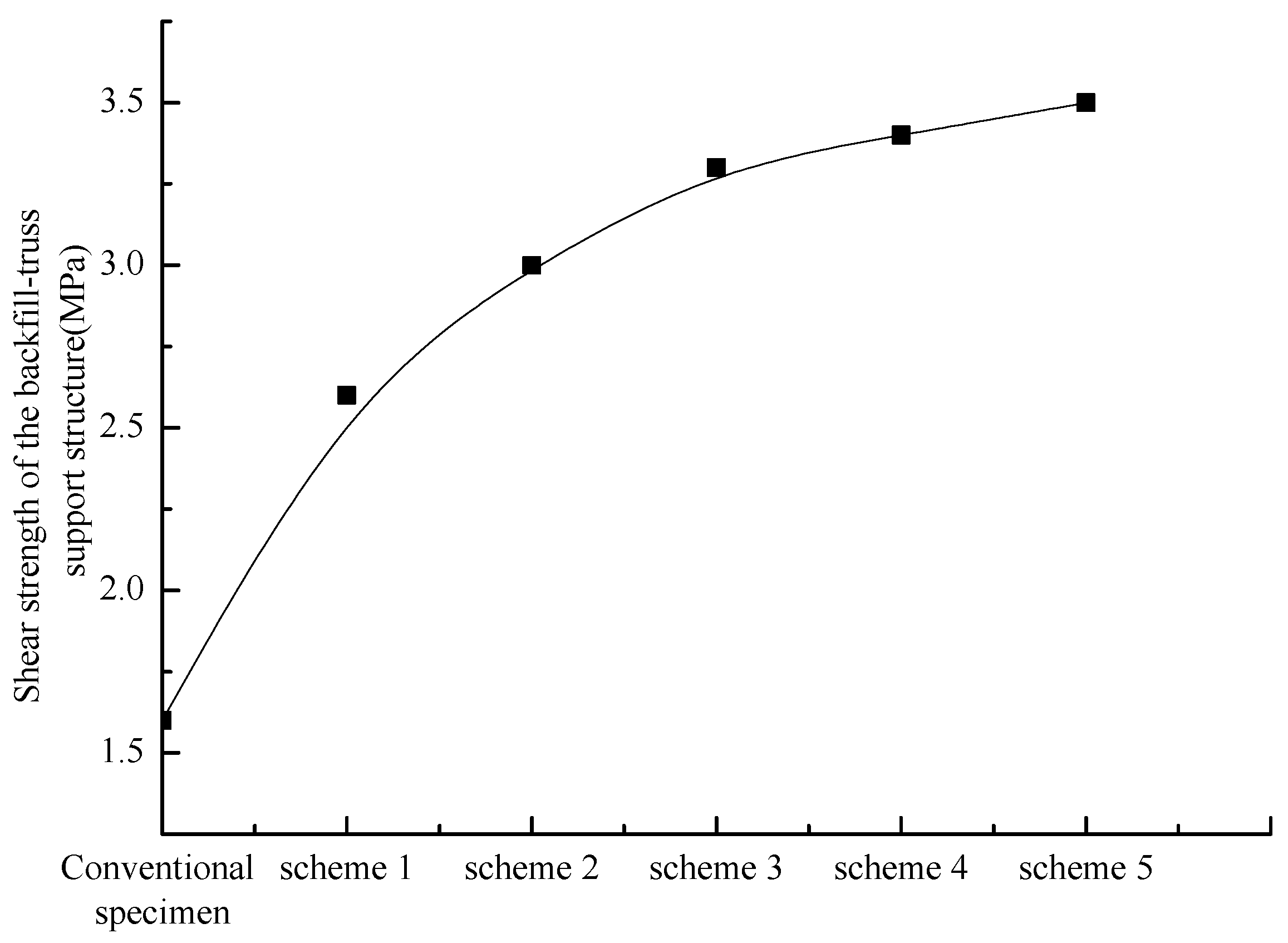

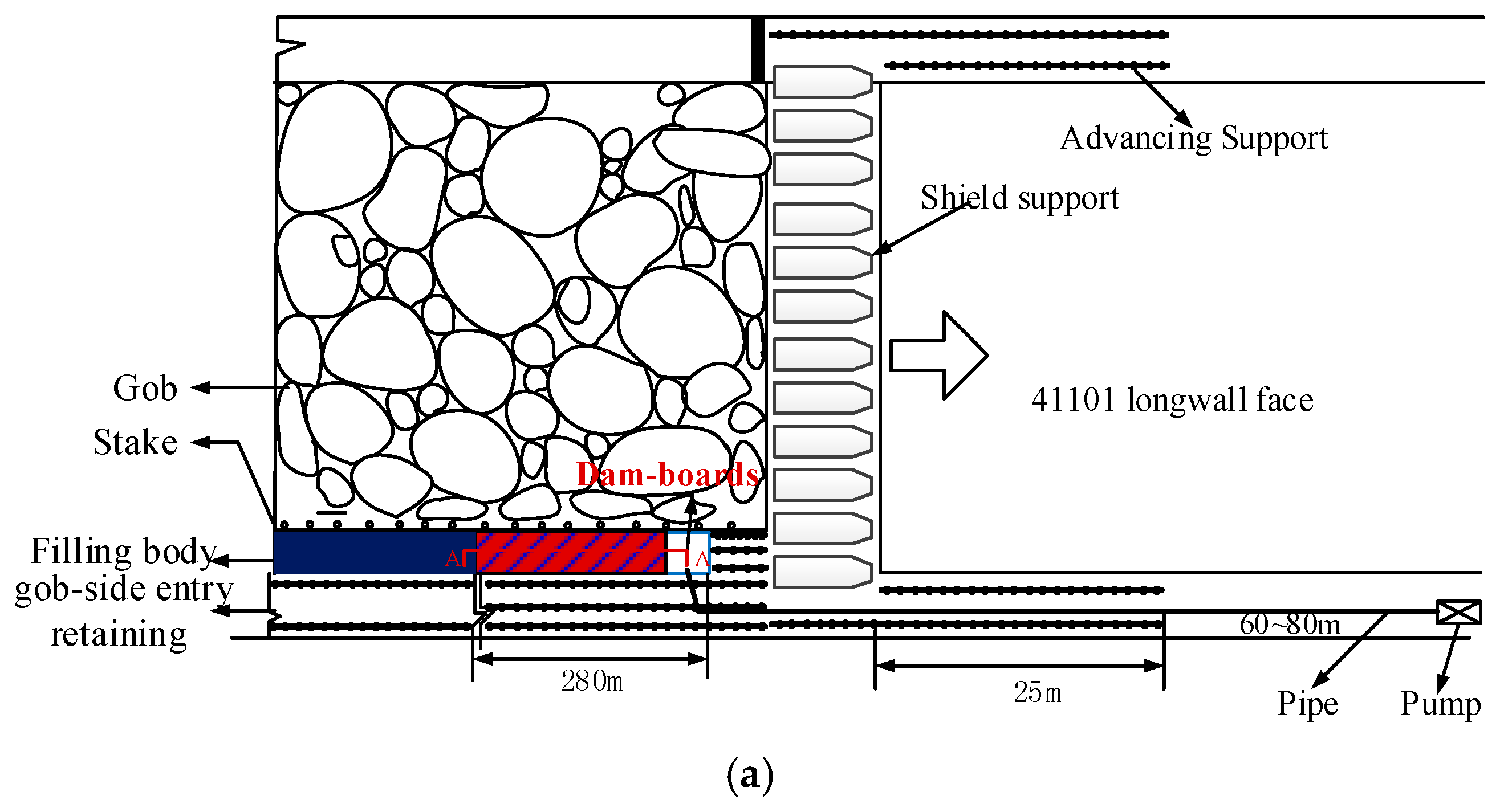
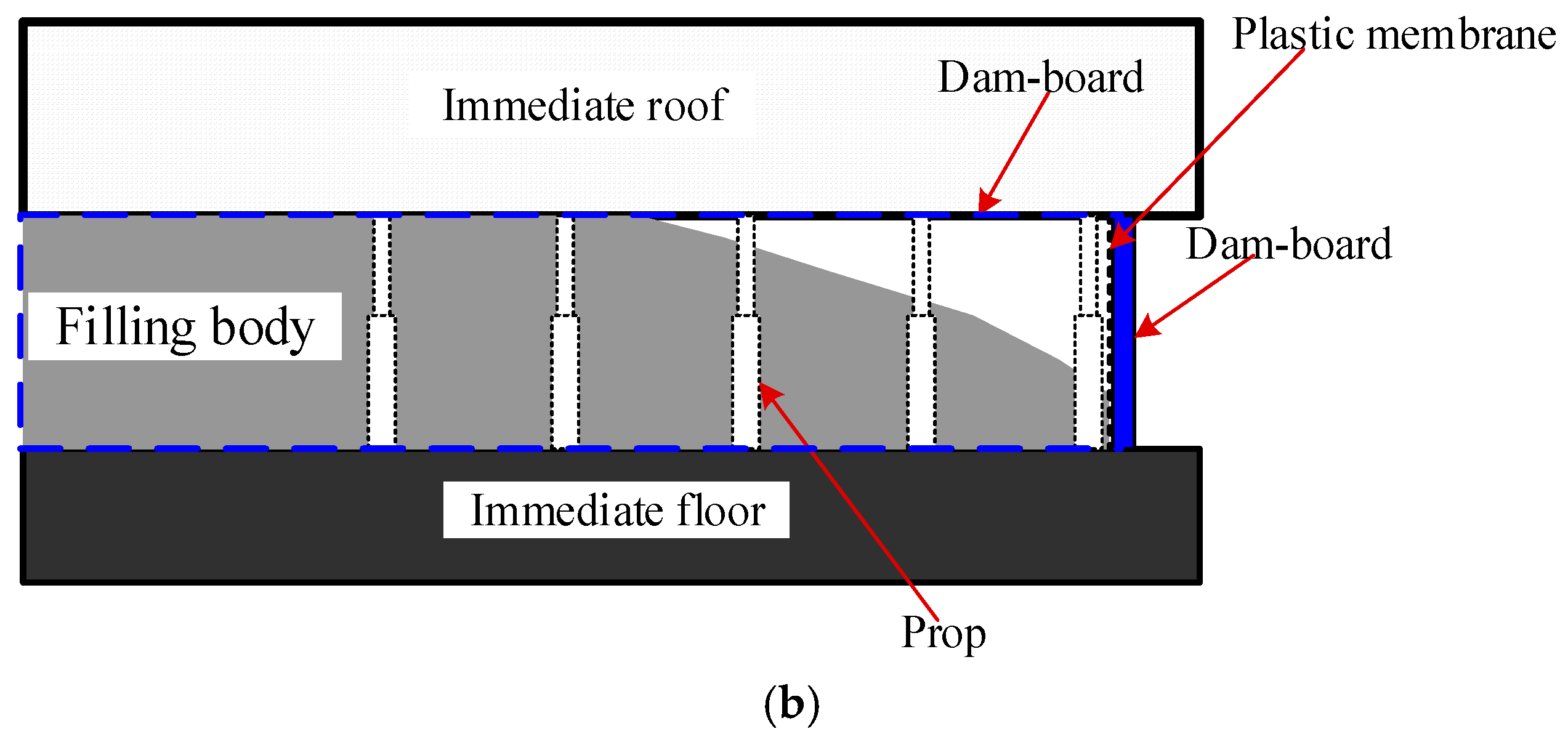
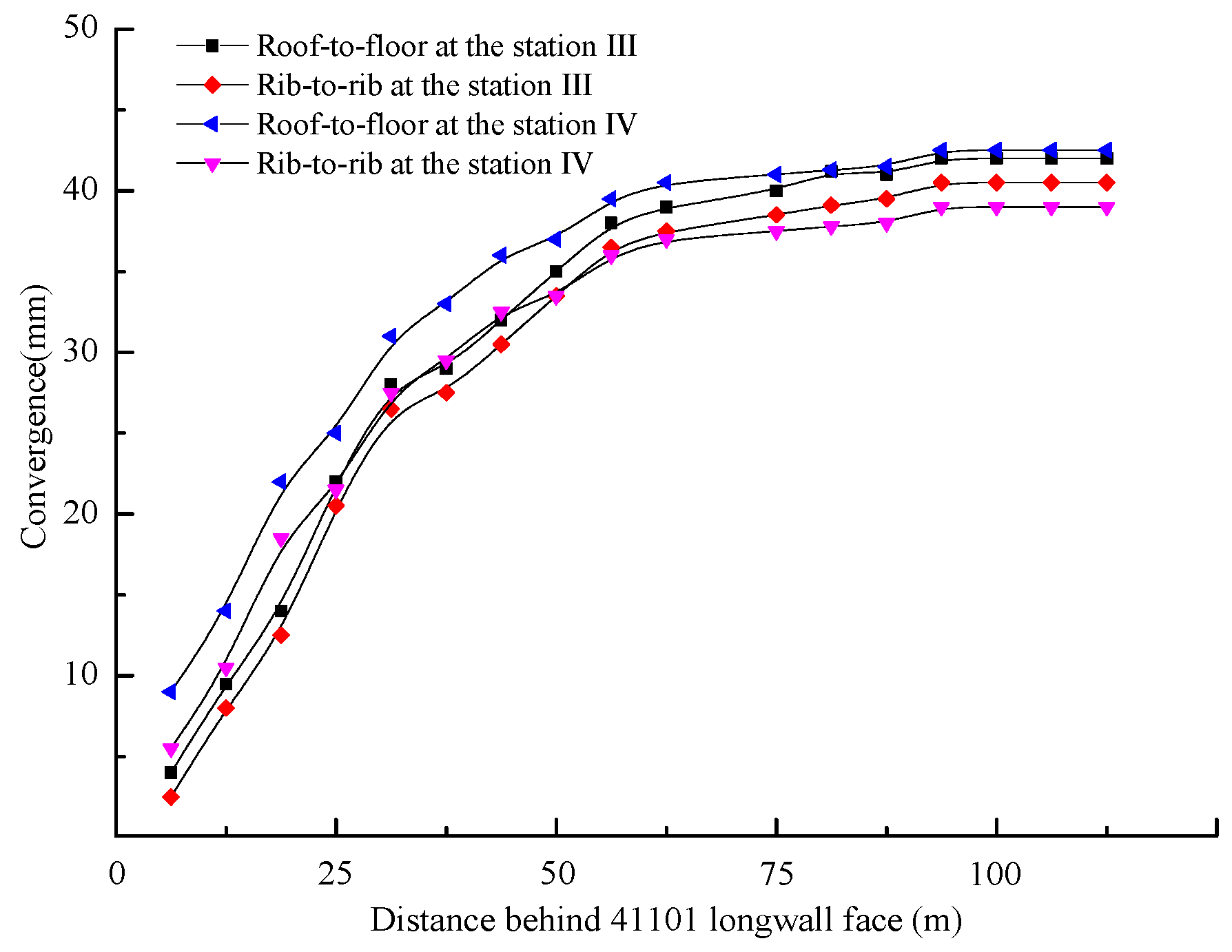
| Proportions of the Paste Filling Materials (kg/t) | Stone Granularity (mm) | |||||||
|---|---|---|---|---|---|---|---|---|
| Water | Cement | Fly Ash | Gangue | River-Sand | Stone | Early Strength Agent | Water-Reducing Agent | |
| 134 | 164 | 44 | 85 | 227 | 340 | 2.8 | 3.2 | 5–10 |
| Parameters | Tension (MPa) | Shear Strength (MPa) | Anchoring Force (MPa) | Elastic Modulus (GPa) | Extensibility | |
|---|---|---|---|---|---|---|
| Element | ||||||
| Rock bolt | 200–600 | 260–600 | ≥50 | 200 | ≥16% | |
| Steel strip | 350–400 | / | / | 200 | ≥16% | |
| Steel wires, thin sheet steel | 600 | 400 | 80 | 210 | ≥16% | |
| Parameters | Borehole Diameter (mm) | Bolt Diameter (mm) | Space (mm) | Bolt Length (mm) | ||
|---|---|---|---|---|---|---|
| Element | Bolt B1 and Bolt B2 | Bolt B3 | ||||
| Engineering prototype | 30 | 20 | 800 | 3000 | 1800 | |
| Truss support structure | 3 | 2 | 80 | 300 | 180 | |
| Type | Width (mm) | Thickness (mm) | Length (mm) | Space (mm) | Diameter (mm) |
|---|---|---|---|---|---|
| Engineering steel strip | 280 | 32 | 3300 | 800 | 30 |
| Thin sheet steel | 28 | 3.2 | 330 | 80 | 3 |
| I:B:S | G% | β | RA% | Unit Weight (kN/m3) | USC (MPa) | Elastic Modulus (MPa) |
|---|---|---|---|---|---|---|
| 1:0.25:0.22 | 2.5 | 25% | 5.0% | 2.80 | 3.29 | 1119.66 |
© 2017 by the authors. Licensee MDPI, Basel, Switzerland. This article is an open access article distributed under the terms and conditions of the Creative Commons Attribution (CC BY) license (http://creativecommons.org/licenses/by/4.0/).
Share and Cite
Ning, J.; Wang, J.; Bu, T.; Hu, S.; Liu, X. An Innovative Support Structure for Gob-Side Entry Retention in Steep Coal Seam Mining. Minerals 2017, 7, 75. https://doi.org/10.3390/min7050075
Ning J, Wang J, Bu T, Hu S, Liu X. An Innovative Support Structure for Gob-Side Entry Retention in Steep Coal Seam Mining. Minerals. 2017; 7(5):75. https://doi.org/10.3390/min7050075
Chicago/Turabian StyleNing, Jianguo, Jun Wang, Tengteng Bu, Shanchao Hu, and Xuesheng Liu. 2017. "An Innovative Support Structure for Gob-Side Entry Retention in Steep Coal Seam Mining" Minerals 7, no. 5: 75. https://doi.org/10.3390/min7050075





